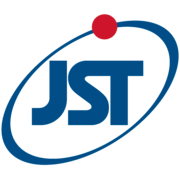Research Topics
“Virtual ligand-assisted screening method” a new approach to the development of transition metal catalysis

The development of transition metal catalysis is one of the most important research topics in organic chemistry because it enables the efficient synthesis of pharmaceuticals and functional materials as well as the synthesis of unprecedented materials. Here, we have developed a "virtual ligand-assisted (VLA) screening method" to streamline "catalyst design", the most important step in such reaction development, through quantum chemical calculations.
Background: Importance and Challenges of Ligand Screening
Transition metal catalysis, represented by the Suzuki-Miyaura cross-coupling reaction (the 2010 Nobel Prize in Chemistry) and the Noyori asymmetric hydrogenation (the 2011 Nobel Prize in Chemistry), is one of the most significant technologies in synthetic organic chemistry. In these reactions, a transition metal complex, consisting of a "transition metal" and "ligands", is employed as a catalyst (Figure 1, left). While the reaction takes place on the transition metal, ligands also play an especially important role to control the reactivity of the transition metal. Although collectively referred to as transition metal complexes, an astronomical variety of the combination of metals and ligands exists, and each exhibits completely different reactivity. Thus, the success of a reaction relies heavily on the design of transition metal catalysts.
A particular challenge in catalyst design is to find an optimal ligand. As shown in the center of Figure 1, the diversity of ligand candidates is as huge as the diversity of chemical structures we can think of, and hence, it is not easy to find an optimal ligand for a reaction of interest from these enormous candidates. Therefore, the process of “ligand screening” is often a bottleneck in the development of new reactions. Conventionally, ligand screening has been performed by trial and error (Figure 1, right), in which an optimal ligand is determined by the experimental feedback cycle of design, synthesis, and evaluation. Although a number of transition metal catalysts were developed based on this method, this approach still has a few drawbacks, including (1) it requires plenty of resources (i.e., time and money) to synthesize and assess even a single ligand, and (2) it results in generating a large amount of waste.

Clue to the Solution "In Silico Ligand Screening" and its Challenges
Against this background, "in silico ligand screening" is a popular research topic around the world. Instead of any experimental work, this method uses quantum chemical calculations to evaluate the performance of ligands (e.g., the activation energy of target reactions) and to suggest candidates of optimal ligands for a target reaction (Figure 2, left). Unlike the conventional experimental trial-and-error method (Figure 1), this method is expected to provide a rapid, low-cost, and environmentally friendly ligand screening process because the synthesis and evaluation of many ligand molecules are not required.
Despite the theoretical studies on in silico ligand screening, however, it has rarely been used practically. The biggest challenge is due to the diversity of ligands (Figure 2, right). Because of countless ligand candidates as mentioned above, it is virtually impossible to evaluate the performance of all candidate molecules by quantum chemical calculations even with a state-of-the-art supercomputer. In reality, calculations thus need to be performed only for representative ligands, which may result in overlooking an optimal ligand.

Research Results: Reverse Thinking Achieved in Silico Ligand Screening
In this study, we have developed a new quantum calculation method called the virtual ligand-assisted (VLA) screening method in order to solve the above problems and to achieve the practical use of in silico ligand screening. Ligands such as organophosphorus ligands are known to change the reactivity of coordinated transition metals through electronic and steric perturbation. Virtual ligands are artificial ligands that approximate these electronic and steric effects in quantum chemical calculations (Figure 3). While actual ligands have intrinsic electronic and steric effects depending on their chemical structures (Figure 3, left), virtual ligands can freely set these effects as independent parameters (Figure 3, right). Therefore, by optimizing the parameters of the virtual ligand so that the desired reaction proceeds fastest (with the least activation energy), the properties of the optimal ligand for the reaction can be easily determined. By conducting an in silico ligand screening using this originally developed virtual ligand (VLA screening), we successfully proposed ligands that are expected to exhibit high regioselectivity in hydroformylation, an industrially important transition metal catalysis. Compared to the typical in silico ligand screening method (Figure 2), where the ligand to be evaluated is heuristically limited in advance of the screening, this method optimizes electronic and steric properties without assuming any specific ligand. In other words, by designing actual ligands based on optimal parameters, this method has realized unprecedentedly rapid ligand screening while minimizing oversight of optimal ligands and the imbalance of chemical space to be evaluated.

Outlook: Computer-Driven Next-Generation Reaction Development Research

The process of "ligand screening", which has been a bottleneck in the development of transition metal catalysis, can be efficiently performed by quantum chemical calculations, leading to a reduction in the time, cost, and environmental burden required for reaction development research. Moreover, in combination with reaction path search methods such as the artificial force induced reaction (AFIR) method, which has been developed in the Maeda Laboratory, a computer-driven next-generation method to develop transition metal catalysis is awaited.
Related Information
- Original Paper: ACS Catal. 2022, DOI: 10.1021/acscatal.2c00267
- Featured Pages:

